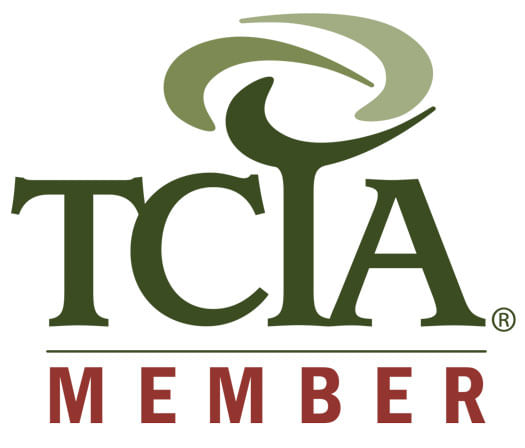Get storm-ready! Be hurricane-prepared BEFORE the season starts.

The Impact of Stump Removal on Soil Health
Maintaining healthy soil is the foundation of a thriving landscape, whether it’s a lush backyard or a sprawling commercial property. Soil health directly impacts the growth and vitality of plants, trees, and grass, playing a critical role in the ecosystem. However, a leftover tree stump can present significant challenges to soil health, often creating hidden problems beneath the surface. These remnants, while seemingly harmless, can contribute to issues such as pest infestations, nutrient imbalances, and even the spread of diseases. Our trained arborists specialize in professional stump removal services designed to protect your landscape’s long-term health.
How Tree Stumps Impact Soil Health
When a tree is cut down, the remaining stump begins a natural decomposition process. While decomposition is a vital part of the ecological cycle, a decaying stump can negatively impact the surrounding soil. One of the primary concerns is that decomposing wood becomes a magnet for pests such as termites, carpenter ants, and beetles. These insects can spread beyond the stump, invading nearby plants and even structures. Additionally, fungal growth is common on rotting stumps, which can leach into the soil and harm other vegetation, spreading disease throughout your garden or yard.
The impact doesn’t stop with pests and fungi; tree stumps can also disrupt soil nutrient balance. As the wood breaks down, it can deplete essential nutrients from the surrounding soil to fuel the decomposition process. This imbalance can leave nearby plants struggling to absorb the nutrients they need to grow. In some cases, decomposing stumps can even create “dead zones” in the soil where new plants cannot establish roots. By understanding these hidden impacts, it becomes clear that stump removal is a necessary step in maintaining a healthy, balanced environment for your landscape.
5 Benefits of Stump Removal for Soil Health
1) Improved Aeration: Removing a stump allows air to circulate more freely through the soil, which is essential for root growth and overall soil health. Improved aeration also helps beneficial microbes thrive, contributing to a healthier ecosystem.
2) Balanced Nutrient Distribution: Stump removal prevents decomposing wood from monopolizing soil nutrients. This ensures that plants and trees in the area can access the resources they need for growth, promoting a more vibrant landscape.
3) Pest Control: Without a stump to attract termites, ants, and other pests, your property becomes less of a target for infestations. This not only protects your soil but also prevents pests from spreading to nearby structures or vegetation.
4) Disease Prevention: Decaying stumps often become breeding grounds for fungi and diseases that can spread to healthy plants. Removing the stump minimizes this risk, creating a safer environment for your landscape.
5) Encourages New Growth: Stump removal clears the way for planting new vegetation, allowing for healthier root systems and a fresh start for your soil.
The Role of Professional Stump Removal
Removing a stump might seem like a simple task, but doing it correctly requires specialized equipment and expertise. Professional stump removal services, like those offered by Tangi Tree, use advanced tools such as stump grinders to efficiently eliminate stumps without causing unnecessary disruption to the surrounding soil. Unlike DIY methods, which can often result in incomplete removal or unintended soil damage, professional services ensure the stump is fully addressed, including the roots below the surface.
Another significant advantage of hiring professionals is their ability to minimize soil disruption. Tangi Tree’s experts take care to preserve the surrounding soil structure, avoiding compaction or unnecessary damage that could hinder future plant growth. They also assess the area to ensure that the stump’s removal doesn’t negatively impact nearby vegetation. This level of precision and care not only protects your landscape but also ensures that the soil remains ready for new planting or other landscaping projects
What Happens After Stump Removal?
Once a stump is removed, the focus shifts to rehabilitating the area to ensure the soil remains healthy and primed for future growth. One of the first steps is to replenish the soil with organic matter, such as compost or mulch. These additions help restore nutrients that may have been depleted during the stump’s presence or removal. Mulch also helps retain moisture and regulate soil temperature, creating an ideal environment for beneficial microorganisms to thrive.
Another crucial step is to consider replanting. Stump removal leaves behind valuable space that can be transformed into an opportunity for new vegetation. Whether you’re planting grass, shrubs, or even another tree, the freshly cleared area offers a clean slate for new life to flourish. Proper preparation, including aerating the soil and ensuring it’s nutrient-rich, can make all the difference in supporting healthy roots and robust growth. With the right post-removal care, your landscape will not only recover but thrive for years to come.
Reclaim Your Soil’s Health with Tangi Tree
Don’t let a stubborn stump hold your soil back from reaching its full potential. At Tangi Tree, we specialize in professional stump removal that protects your soil and prepares your landscape for fresh growth. Our expert team of arborists ensures minimal disruption to your property while delivering maximum benefits for your soil’s health. Contact Tangi Tree today to schedule your stump removal service and give your yard the fresh start it deserves!






